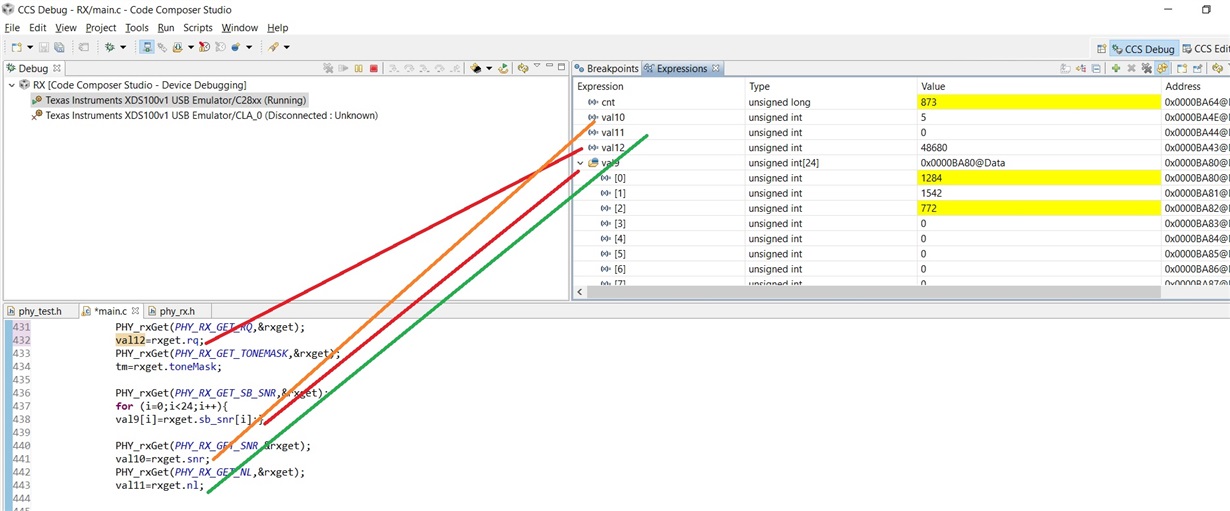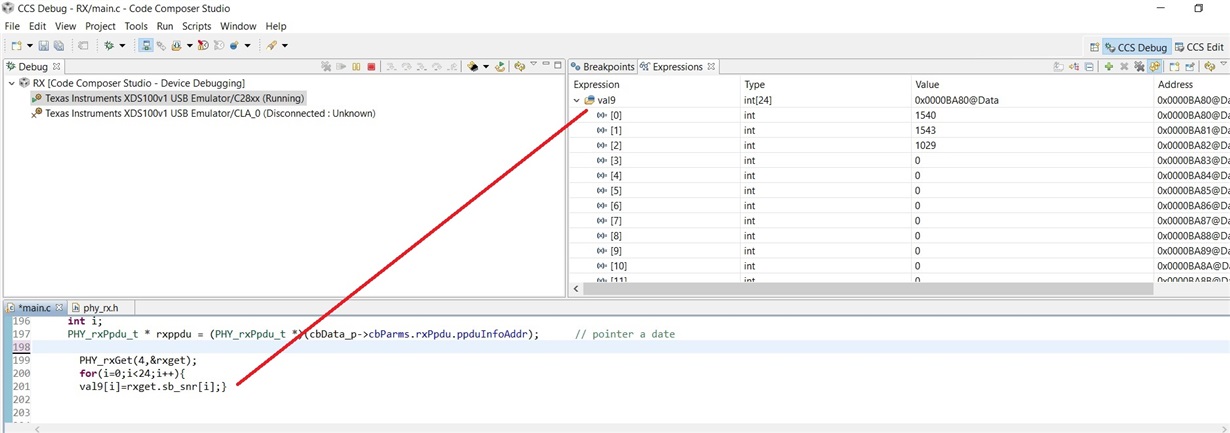Hi everyone,
I'm trying to modify the code PHY_G3_EXAMPLE to acquire some data as SNR, Reception Quality etc.
I have some trouble to understand how does the PHY_rxGet(UINT16 getType, UINT16 *getData_p) works. I have implemented this function inside the code by first declaring the structure -> PHY_rxGetData_t rxget and then recall the PHY_rxGet function for example in this way:
-PHY_rxGet(PHY_RX_GET_TONEMAP_INFO,&rxget);
val10=rxget.toneMapInfo;
-PHY_rxGet(PHY_RX_GET_NL,&rxget);
val7=rxget.nl; etc...
The problem is that when I look the variables: val10, val7 (that I have declared before as UIN16) the result is 0. Only If I put inside the function "PHY_RX_GET_TONEMASK" correspond with the TX value, but for example if I want to know the SNR (so I put inside the function "PHY_RX_GET_SNR" ) or other parameter (as NoiseLevel, sb_SNR, ReceptionQuality..) the value is always 0.
Can someone tell me the reason?
Thanks for your support,
Best,
Andrea



